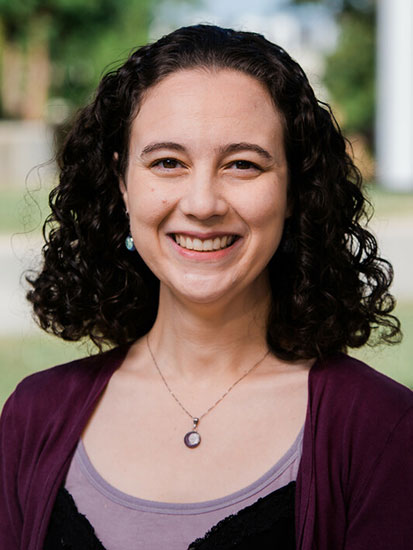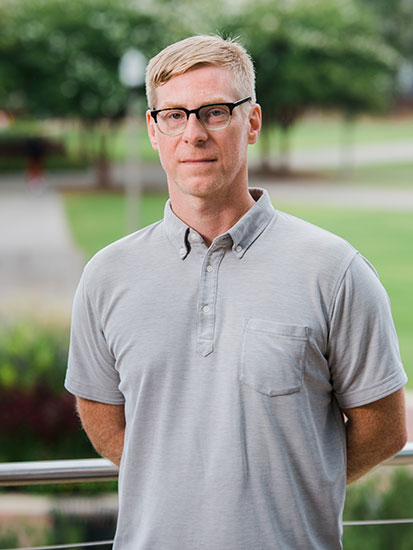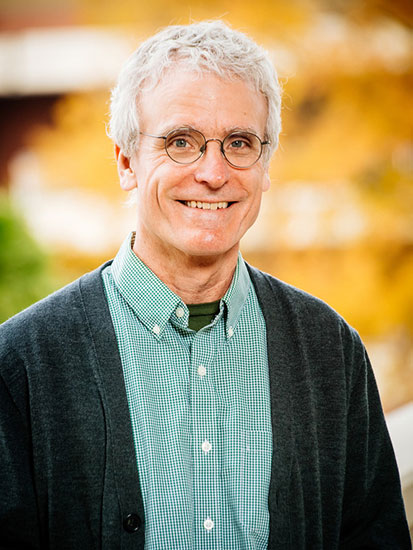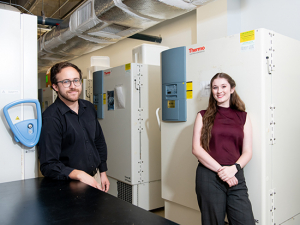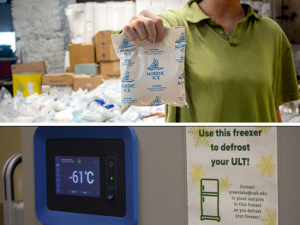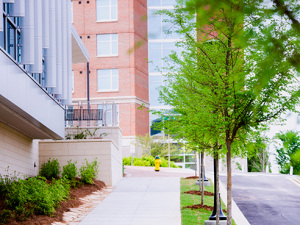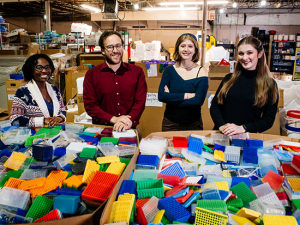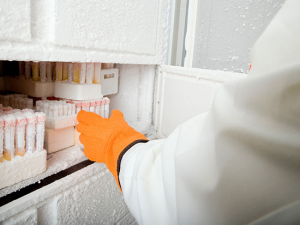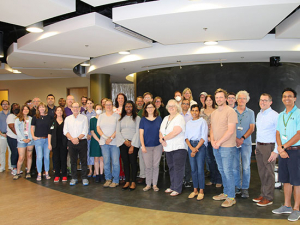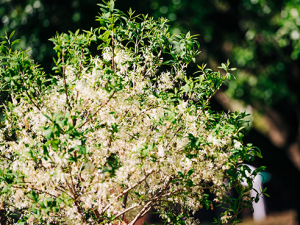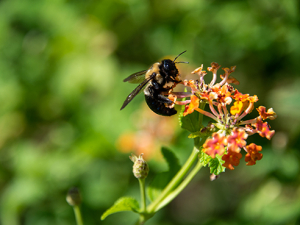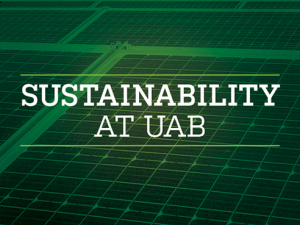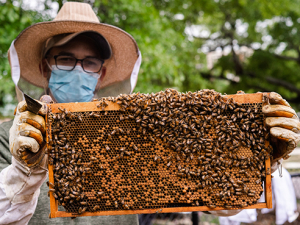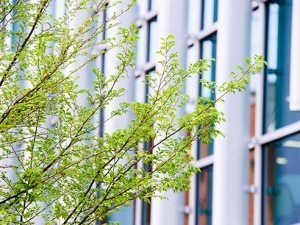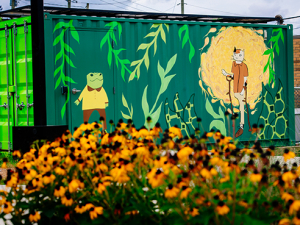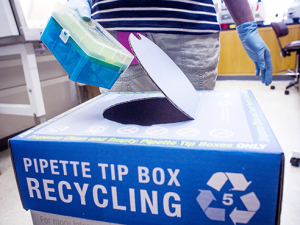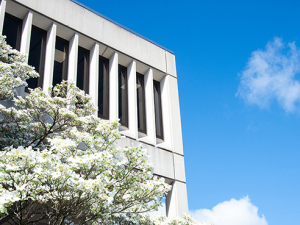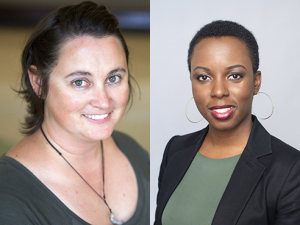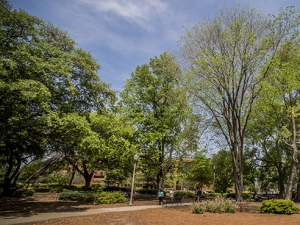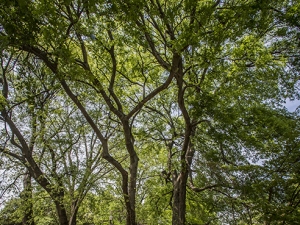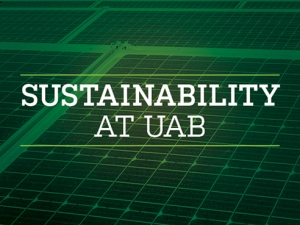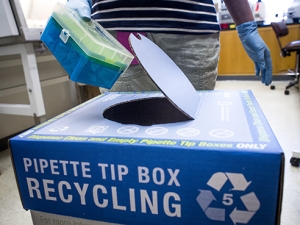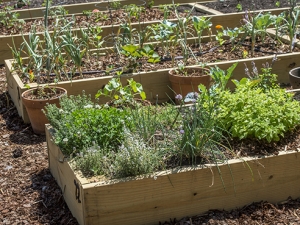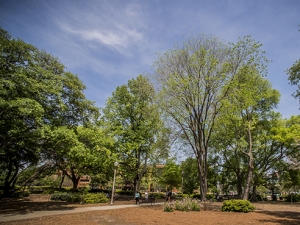 The 2022 Red Mountain Project cohort, pictured above, was the largest of the sustainability training program's four cohorts so far, with 32 faculty participants.When someone in Jefferson County dies unexpectedly, UAB forensic pathologist Daniel Atherton, M.D., is often called in to conduct an autopsy for the county coroner’s office.
The 2022 Red Mountain Project cohort, pictured above, was the largest of the sustainability training program's four cohorts so far, with 32 faculty participants.When someone in Jefferson County dies unexpectedly, UAB forensic pathologist Daniel Atherton, M.D., is often called in to conduct an autopsy for the county coroner’s office.
True-crime TV and news reports publicize one aspect of the medical examiner’s work. But few people understand that postmortem studies can lead to changes in policy. “One classic example is asbestos-related lung disease,” said Atherton, an associate professor in the Heersink School of Medicine Department of Pathology. As a result of clinical and pathological studies, it became clear that asbestos fibers accumulate in the lungs, causing scarring and cancer. This work led to regulation of asbestos use in the United States, and outright bans in several countries. “Ongoing research involves how air quality in urban areas affects peoples’ health,” Atherton said. “As we learn more about the dangers of environmental exposures [through these studies], it emphasizes the need for more sustainable practices.”
Atherton teaches a co-enrollment course on how postmortem studies shape public health policy for UAB medical students. But he suspected that other UAB students — in public health, criminal justice and sociology, for example — might be interested, as well.
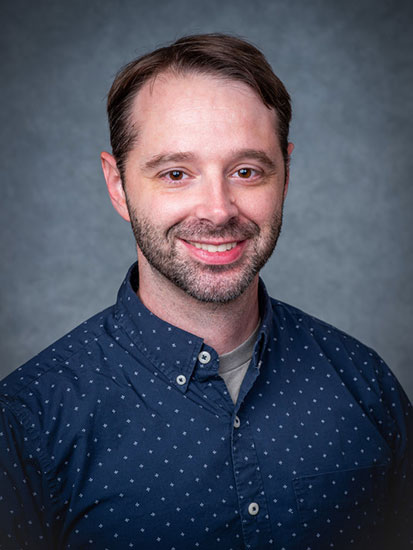 Daniel Atherton, M.D., an associate professor in the Department of Pathology, teaches a course on how postmortem studies shape public health policy. He applied to the Red Mountain Project to learn more about “how we as educators can help students see the importance of thinking about how they can introduce sustainability in whatever career they choose,” Atherton said.
Daniel Atherton, M.D., an associate professor in the Department of Pathology, teaches a course on how postmortem studies shape public health policy. He applied to the Red Mountain Project to learn more about “how we as educators can help students see the importance of thinking about how they can introduce sustainability in whatever career they choose,” Atherton said.
So when he heard about the Red Mountain Project, a course-development grant program from UAB Sustainability, Atherton applied. He wanted to learn more about “how we as educators can help students see the importance of thinking about how they can introduce sustainability in whatever career they choose,” Atherton said. He also wanted to discover “ways to convey those ideas and principles to students and trainees.”
Record attendance
Atherton was one of 32 faculty participants in a two-day Red Mountain Project workshop held May 5-6, 2022. The course was led by Geoffrey Chase, Ph.D., a national expert in sustainability education and founder of the Ponderosa Project, a groundbreaking sustainability training program at Northern Arizona University. The Ponderosa Project sparked Emory University’s Piedmont Project, which was the direct inspiration for UAB’s Red Mountain Project. In three previous cohorts — in 2015, 2016 and 2018 — the Red Mountain Project trained 50 UAB faculty.
The 2022 cohort, the Red Mountain Project’s first iteration post-COVID, “was a huge success,” said Bambi Ingram, UAB Sustainability manager. She attributes the record turnout to Chase’s fame and to growing interest in sustainability on the part of faculty and students.
“In the Sustainability office, we are always looking to incorporate more of our work with UAB’s academic program,” Ingram said. “This is one of the best ways for us to collaborate with faculty.”
Another draw for faculty, Ingram says, is the Blazer Core curriculum, which launches in fall 2023. Blazer Core includes special designations for courses on sustainability and other topics that reflect key institutional priorities (see box, Raising the flags). Ingram invited Christopher Minnix, Ph.D., director of Blazer Core, to participate in the workshop. “Bambi’s leadership of this project has been exceptional, and Geoffrey Chase, the speaker, was phenomenal,” Minnix said. “It really solidified a strong faculty commitment to wanting to make sustainability a part of the curriculum and keep that conversation going. Out of that one initial event, I can see a lot coming from this in the future.”
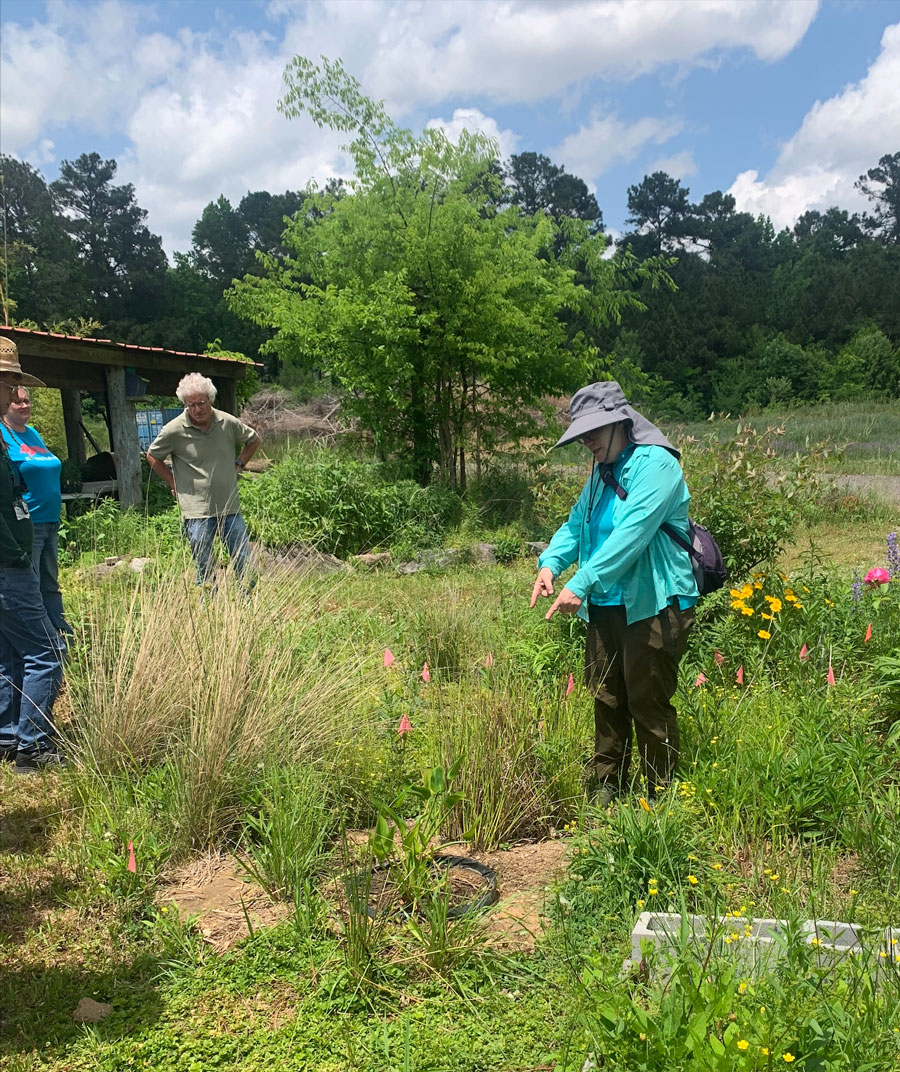 Red Mountain Project participants explore the grounds of the Birmingham Zoo on the first day of their workshop in May 2022.
Red Mountain Project participants explore the grounds of the Birmingham Zoo on the first day of their workshop in May 2022.Connection and inspiration
“The Red Mountain Project was a great way to learn more about the resources and priorities of the university and about the research and interests of other faculty all across campus,” said Claire Greenstein, Ph.D., assistant professor in the Department of Political Science and Public Administration. “There were many potential teaching collaborations that came out of the program, along with research ideas for co-authored work.” Those connections also help in advising students, Greenstein said: “Now I can direct my students on what classes they might want to take next. Students really love it when what they learn in one class can be applied to a next one.”
The first updated course to emerge from the Red Mountain Project’s 2022 cohort is EC 490, “Natural Resource Economics,” from Benjamin Meadows, Ph.D., assistant professor in the Department of Economics. The course, which Meadows plans to teach in spring 2023, highlights the real-world challenges of economically balancing efficiency and scarcity in use of water, air, energy, food and more. In his course design, Meadows similarly emphasizes assignments with real-world application, including an exercise in which students will watch the viral documentary “Seaspiracy,” jot down notes on their phones or in a notebook, and come to class ready for a robust discussion. “You’d be surprised how valuable this skill is,” Meadows wrote in his syllabus. “You rarely (aka never) will be asked to submit an APA-formatted paper in private industry. Instead, you bring notes … and your brain.” (Meadows and other faculty talk about their courses in development below.)
“Very often, faculty enter the workshop thinking that ‘sustainability’ just means including a particular environmental theme” in their courses, Ingram said. “The workshop helps them expand their horizons, to realize that there is social and economic sustainability as well as environmental sustainability.”
“It was really striking that so many of us from very different fields — from engineering and computer science to biology and English — are converging on the topic of sustainability,” said Kyle Grimes, Ph.D., professor in the Department of English.
Mercy Aula, Ph.D., assistant professor in the Department of Environmental Health Sciences, says sustainability has been central to her field for a long time. Part of the appeal of the Red Mountain Project was “I wanted to see what others were doing and be inspired,” she said.
“Realizing that issues of sustainability are so important across disciplines and subjects is inspiring,” said Stephen Merritt, Ph.D., associate professor in the Department of Anthropology. “It felt like a base of people to connect with and brainstorm ideas.”
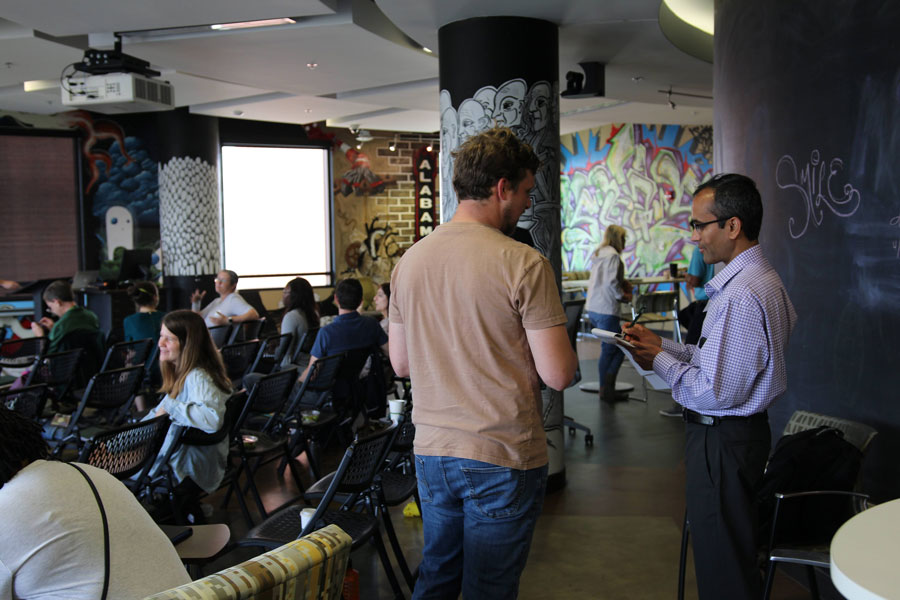 Faculty interact during the second day of the Red Mountain Workshop at the Edge of Chaos.
Faculty interact during the second day of the Red Mountain Workshop at the Edge of Chaos.New courses under construction
Members of the 2022 Red Mountain Project cohort — who represent six UAB schools and more than a dozen departments — are now using what they learned during the May workshop to develop new or revised syllabi for courses. Faculty who submit a syllabus by mid-August receive a $1,500 stipend, which can be used for conferences, course materials and more.
We asked several participants in the 2022 cohort to share more about their courses in development and what they are taking away from the Red Mountain Project program. (Click or tap the circles to navigate the slideshow.)
-
Escaping untenable circumstances
Claire Greenstein, Ph.D., assistant professor in the Department of Political Science and Public Administration, plans to implement sustainability education into the Transitional Justice course she is developing for the fall 2022 semester.
After a conflict, or period of authoritarian rule, ends, “how do societies — governments, perpetrators, victims — democratize and rebuild?” Greenstein said. “That is what transitional justice is about, and that often has to do with sustainability. Many times, conflicts start because of economic inequality or the long-held grievances of people living in untenable circumstances. The literature shows you can prevent conflict recurrence by implementing justice and economic, societal and human development in sustainable ways, so you don’t find yourself in the same place.”
Sustainability is something that interests her, and it is a topic that students are “really interested in, but as a political scientist it’s not something I have training in,” Greenstein said. The Red Mountain Project was “a great way to get a crash course in sustainability.”
-
Sparking creativity
Mercy Aula, Ph.D., assistant professor in the Department of Environmental Health Sciences, is expanding on sustainability topics in two courses she teaches: ENH 600, “Fundamentals of Environmental Health,” and ENH 697, “Environmental Health Perspectives.”
Sustainability has always been a part of those classes, but “I was looking to expand on those topics and make them more hands-on,” Aula said.
She says she found inspiration in activities at the Red Mountain Project workshop, including an exercise that challenged groups of faculty to generate teaching ideas from randomly assigned photographs. “Our team was asked to analyze a photo of a cafeteria and describe elements of sustainability based on the picture,” Aula said. “Among members of my group were two engineers, a writer, physicists, a filmmaker and myself, and we all brainstormed and put our ideas together. The breakout sessions were really impactful to me.”
For her fall course on environmental health, Aula will assign students a paper in which they must identify elements of their communities that are sustainable from economic, social and environmental perspectives, as well as gaps that exist. “But I was even able to immediately add some new elements to my summer classes as well,” she said.
-
Pest or asset?
Benjamin Meadows, Ph.D., assistant professor in the Department of Economics, has updated his “Natural Resource Economics” course with new assignments and perspectives from the Red Mountain Project. “I was drawn to the Red Mountain Project because a lot of the work done in environmental economics — one of my fields of research — is deeply interdisciplinary,” Meadows said. His dissertation research, for instance, leaned on “the work of mathematicians, ecologists, fisheries scientists and natural resource modelers,” he said. “Additionally, my first year at UAB was the first year of COVID, so I’ve been eager to build relationships across campus.”
In one Red Mountain Project group exercise, “we were encouraged to investigate the natural systems found in one photo,” Meadows said. “Our group’s photo had pictures of bee houses, bat houses and rodent houses, which led to the question ‘Which species should we harbor, and which species should we eliminate as a nuisance?’ This, in turn, sparked a robust conversation about the difference between pests and valued species.” Often, the species that are labeled as invasive are those whose costs exceed their benefits, such as fire ants, silver carp and kudzu, Meadows said, “while species that are still non-native but are perceived as valuable — brown trout, rainbow trout, earthworms — are verbally exempt from this label.” Similarly, some native species with benefits that are unquantified or unperceived — bats, which are pollinators and provide pest control, or carpenter bees and termites, which are dead-wood managers, for example — become labeled as pests and the public requests control strategies for them, Meadows points out.
In his spring 2023 offering of “Natural Resource Economics,” “I want to bring this conversation into the classroom,” Meadows said. His students will be assigned to economically validate one species as a pest or asset “to illuminate the conversation.”
-
Inspiring involvement
Stephen Merritt, Ph.D., associate professor in the Department of Anthropology, is developing a new course on the Anthropocene. This is a geological period “defined as the time when human activity has really impacted the Earth in an extremely significant way,” starting with the development of industrialization, he said. “Issues about the Anthropocene are very relevant to the world that we live in,” including economic issues, the food system and globalization. “In this course, students can better understand how they fit into the world around them.”
One major dimension of this is “global connectedness,” Merritt said. “It is a way to look at the Earth around us and recognize the human impact and how involved in that we all are.”
The Red Mountain Project itself emphasized connection, he adds. “I really appreciated, coming out of the COVID pandemic, having interaction with colleagues across UAB and realizing that issues of sustainability are so important across disciplines and subjects,” Merritt said.
-
A new ethic of sustainability
Kyle Grimes, Ph.D., professor in the Department of English, is introducing new material on the Anthropocene to his existing course on nature writing, which “considers the relationship between human beings and the environment within the Western literary tradition,” he said. “We start with the two creation stories in Genesis, we work our way through the nature writing of people like Wordsworth and Thoreau, then — following the scientific revolution instigated by Darwin — we look at how humankind’s dominance of the natural world (i.e., the Anthropocene) necessitates a new ethic of sustainability.”
Through classic writers as well as modern writers such as Rachel Carson and Wendell Berry, “we will consider some of the questions about Nature that have been significant in our history and that have bearing on current environmental discussion,” Grimes wrote in his syllabus, including “Are natural resources here for human use, or do we damage Nature by using natural resources? Does natural beauty express some genuine moral or ethical values? Is there some deeply spiritual quality in Nature that we need to protect, or is Nature just our name for a set of biochemical and mechanical processes that are indifferent to human desires?”
Although he has been teaching the course for the past several years, “I haven’t been completely satisfied with the final weeks’ content on the Anthropocene,” Grimes said. “The stipend and the RMP more generally have given me both the encouragement and the materials with which to connect the abstract conceptual aspects of the class with the very tangible activities and sustainability projects going on right here at UAB.”
Raising the flags
One of the Blazer Core curriculum’s innovations is its flagging program. Flags are similar to microcredentials, says Christopher Minnix, Ph.D., director of Blazer Core and an associate professor in the Department of English. They are recorded on student transcripts, highlighting courses “that cultivate skills, perspectives and habits of mind that reflect the goals of the core and ideals of UAB,” according to the Blazer Core site.
In addition to sustainability, Blazer Core flags include wellness, civic engagement, post-freshman writing, global/multicultural perspectives, and high-impact practices. “The idea is that, by the end of their core courses, the students have a set of flags through coursework and co-curricular experiences that gives them a sense of what their focus has been,” Minnix said. “They reflect key institutional priorities, such as UAB’s commitment to sustainability, which in turn helps students recognize what our institution values and is really about.”
More from Red Mountain Project cohorts
See how previous Red Mountain Project participants have incorporated sustainability into their courses in this story from the UAB Reporter.
